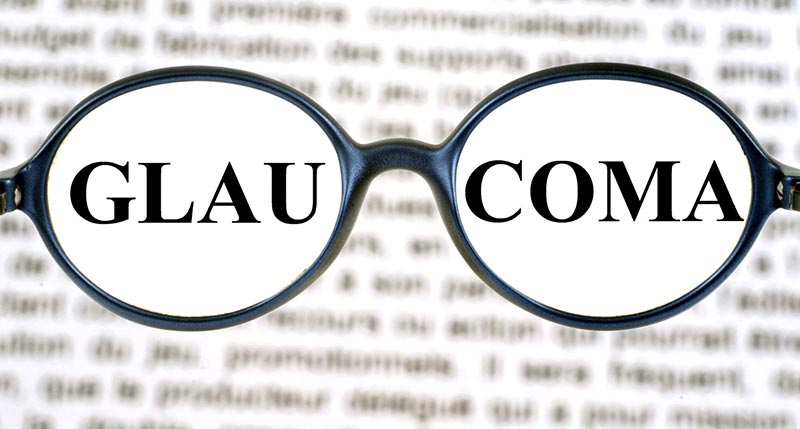January is Glaucoma Awareness Month. It is a time to increase awareness of this group of diseases that are known as the “silent thief of sight” because they are painless and symptom-free. Glaucoma cannot be prevented, and though there are treatments, there is no cure.
People most at risk for developing glaucoma include anyone over age 40 (although younger people can develop the disease); those with a family history of glaucoma; people of African, Latino, Hispanic or Asian descent; and people who have diabetes; severe myopia; thin central corneas or extremely high (or low) blood pressure.
In the group of diseases known as glaucoma, the optic nerve suffers damage, causing patients to lose part of their visual field. While there are variations of glaucoma in which eye pressure is normal, damage to the optic nerve in glaucoma is typically caused by high pressure inside of the eye—known as intraocular pressure (IOP).
It can be hard to understand how high IOP can cause damage to the optic nerve. To help you understand, here are three metaphors that help to explain glaucoma:
Think of the Eye as a Sink
High intraocular pressure can be caused by too much fluid in the eye. It’s helpful to think of the eye as a sink to understand this idea better.
In the “eye as a sink” metaphor, your eye’s faucet is always running, filling the eye constantly with fluid, and the drain is always open to let that fluid drain out. The front part of your eye is filled with a clear fluid called the aqueous humor. It nourishes the structures of the eye and is constantly produced. After it delivers nourishment to the cornea and lens, the aqueous humor flows out through a tiny opening of spongy tissue called the trabecular meshwork. And we mean tiny: The opening is only about 1/50 of an inch wide. The trabecular meshwork is the “open drain” in the “eye as a sink” metaphor. It is located in the front of the eye right at the angle made where your iris and cornea come together.
So, if the faucet is always running, making more and more aqueous humor fluid to nourish the eye, and the drain is always open to let that fluid out, everything should be fine. However, in glaucoma, the drain can become clogged, and then the fluid can’t drain out of the eye as fast as it is produced. That causes the fluid to back up. That means there is more fluid than necessary in the eye. Since the eye is a closed structure, the “sink” can’t overflow and instead gets backed up with excess fluid. That built-up fluid is what causes pressure within the eye, and that’s when IOP readings increase. High IOP is one symptom of glaucoma.
Think of the Eye as a Balloon
Let’s use another metaphor to explain how the increased eye pressure damages vision. To understand it better, think of the eye as a balloon.
When you inflate a balloon to the right level, all is well. But have you ever over-inflated a balloon to the point that it popped? While that’s not exactly what happens in glaucoma, you can think of the eye with glaucoma like a balloon with too much air in it. The eye tissues are too strong to pop (thankfully!) but when there is too much fluid in the eye, it damages the weakest point of the eye. In the eye, the weakest point is the place where the optic nerve is located.
The optic nerve is the messenger that carries visual information from the eyes to the brain so we can see. When eye pressure increases due to too much fluid, the optic nerve gets squeezed and pinched, causing damage. The nerve fibers start to degenerate and can no longer carry visual information to the brain. It’s a slow process, but eventually the tiny nerve axons and ganglions that are part of the optic nerve become damaged and die. Once those nerve cells die, it is not possible to bring them back to life —and the vision you lose with those cells won’t come back either. That’s how glaucoma results in permanent vision loss.
Think of the Eye as a Camera
The final way to understand glaucoma and how it impacts vision is to think of your eye as a digital camera. That’s a fairly straightforward comparison. The eye has a lens, just like a camera does, and the lens helps it focus light. That focus is sharpened in the retina, and information about the image gets transmitted to the brain through the optic nerve.
When you think of the eye as a camera, think of the optic nerve as the cable that connects your “camera” to a computer so you can transfer images from the camera to the computer. With glaucoma, the “cable” (in this case, the optic nerve) needed to transmit images gets damaged. Due to the damage, those images no longer make it to the brain. That’s an easy explanation for the damage glaucoma can cause and how it can steal portions of your visual field.
Early Detection is Key
When dealing with glaucoma, early detection is the key to preventing vision loss and slowing the disease’s progression. With glaucoma, you don’t realize you’re losing vision until it’s gone—and once it’s gone, it’s gone permanently.
Call us today to schedule your annual comprehensive eye exam so your optometrist can perform the painless diagnostic tests that can catch glaucoma in its early stages before any loss to your visual field has occurred.

